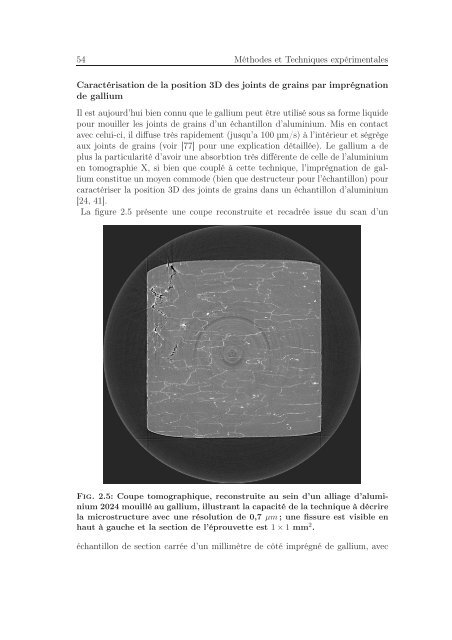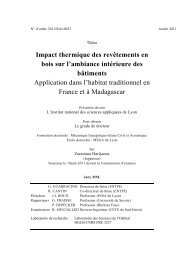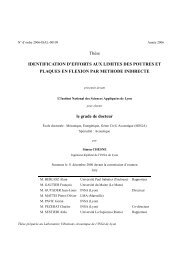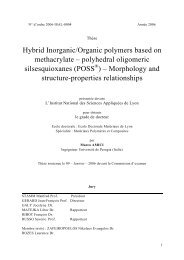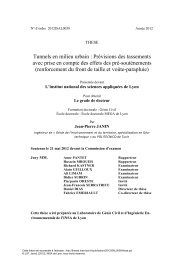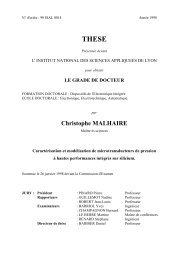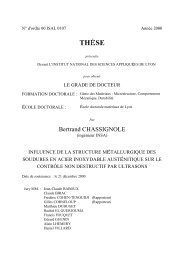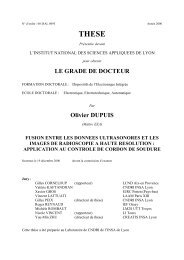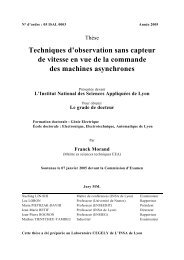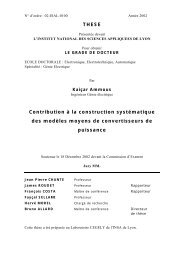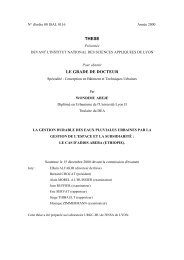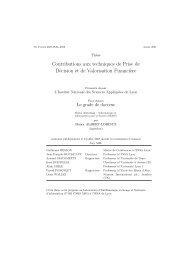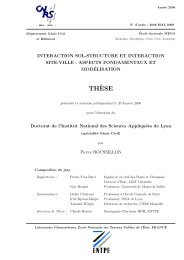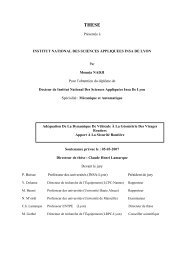Identification des mécanismes de fissuration dans un alliage d ...
Identification des mécanismes de fissuration dans un alliage d ...
Identification des mécanismes de fissuration dans un alliage d ...
Create successful ePaper yourself
Turn your PDF publications into a flip-book with our unique Google optimized e-Paper software.
54 Métho<strong><strong>de</strong>s</strong> et Techniques expérimentales<br />
Caractérisation <strong>de</strong> la position 3D <strong><strong>de</strong>s</strong> joints <strong>de</strong> grains par imprégnation<br />
<strong>de</strong> gallium<br />
Il est aujourd’hui bien connu que le gallium peut être utilisé sous sa forme liqui<strong>de</strong><br />
pour mouiller les joints <strong>de</strong> grains d’<strong>un</strong> échantillon d’aluminium. Mis en contact<br />
avec celui-ci, il diffuse très rapi<strong>de</strong>ment (jusqu’a 100 µm/s) à l’intérieur et ségrège<br />
aux joints <strong>de</strong> grains (voir [77] pour <strong>un</strong>e explication détaillée). Le gallium a <strong>de</strong><br />
plus la particularité d’avoir <strong>un</strong>e absorbtion très différente <strong>de</strong> celle <strong>de</strong> l’aluminium<br />
en tomographie X, si bien que couplé à cette technique, l’imprégnation <strong>de</strong> gallium<br />
constitue <strong>un</strong> moyen commo<strong>de</strong> (bien que <strong><strong>de</strong>s</strong>tructeur pour l’échantillon) pour<br />
caractériser la position 3D <strong><strong>de</strong>s</strong> joints <strong>de</strong> grains <strong>dans</strong> <strong>un</strong> échantillon d’aluminium<br />
[24, 41].<br />
La figure 2.5 présente <strong>un</strong>e coupe reconstruite et recadrée issue du scan d’<strong>un</strong><br />
Fig. 2.5: Coupe tomographique, reconstruite au sein d’<strong>un</strong> <strong>alliage</strong> d’aluminium<br />
2024 mouillé au gallium, illustrant la capacité <strong>de</strong> la technique à décrire<br />
la microstructure avec <strong>un</strong>e résolution <strong>de</strong> 0,7 µm; <strong>un</strong>e fissure est visible en<br />
haut à gauche et la section <strong>de</strong> l’éprouvette est 1 × 1 mm 2 .<br />
échantillon <strong>de</strong> section carrée d’<strong>un</strong> millimètre <strong>de</strong> côté imprégné <strong>de</strong> gallium, avec


